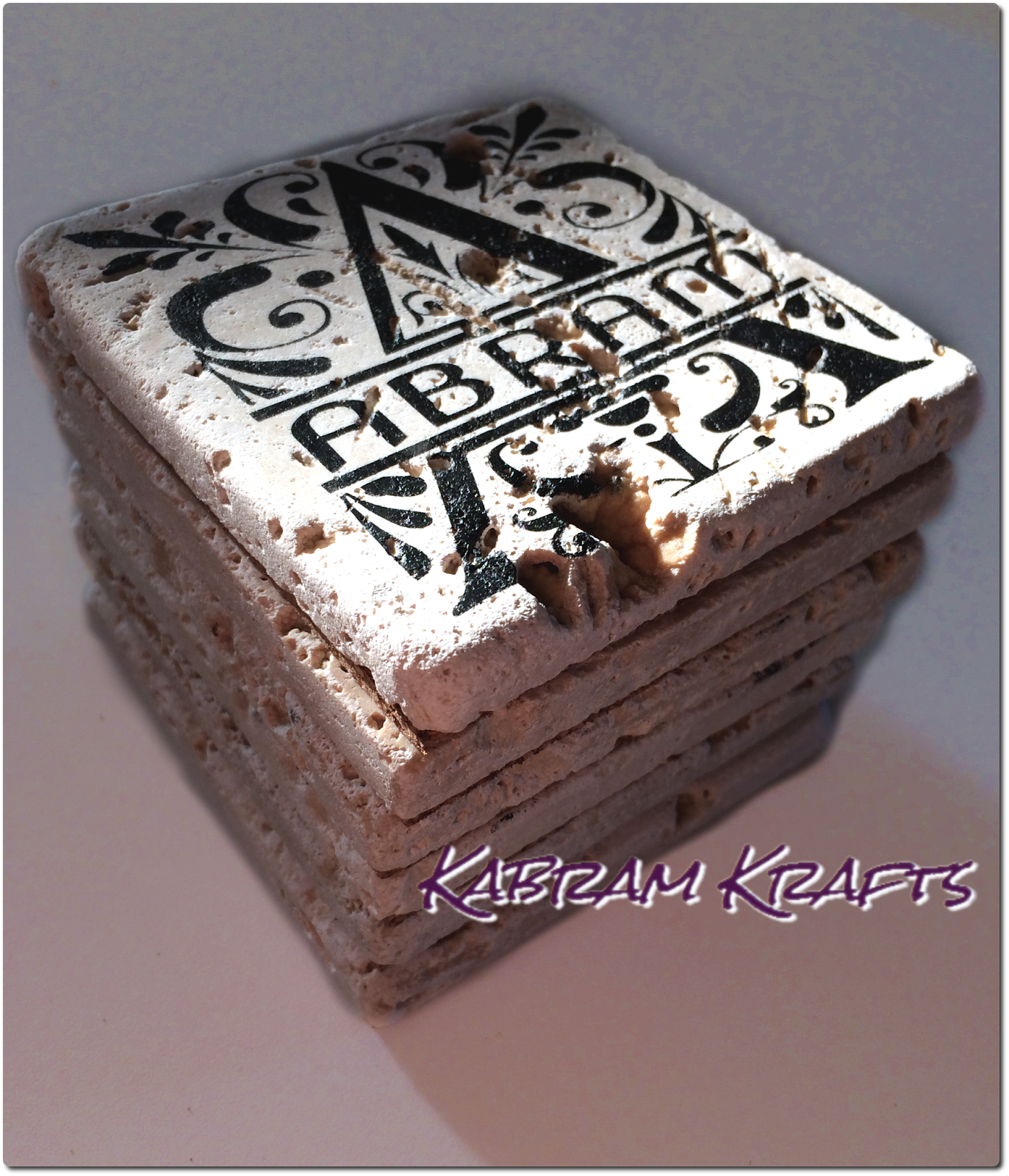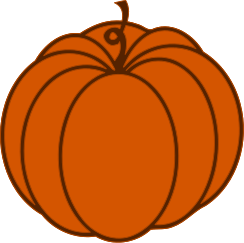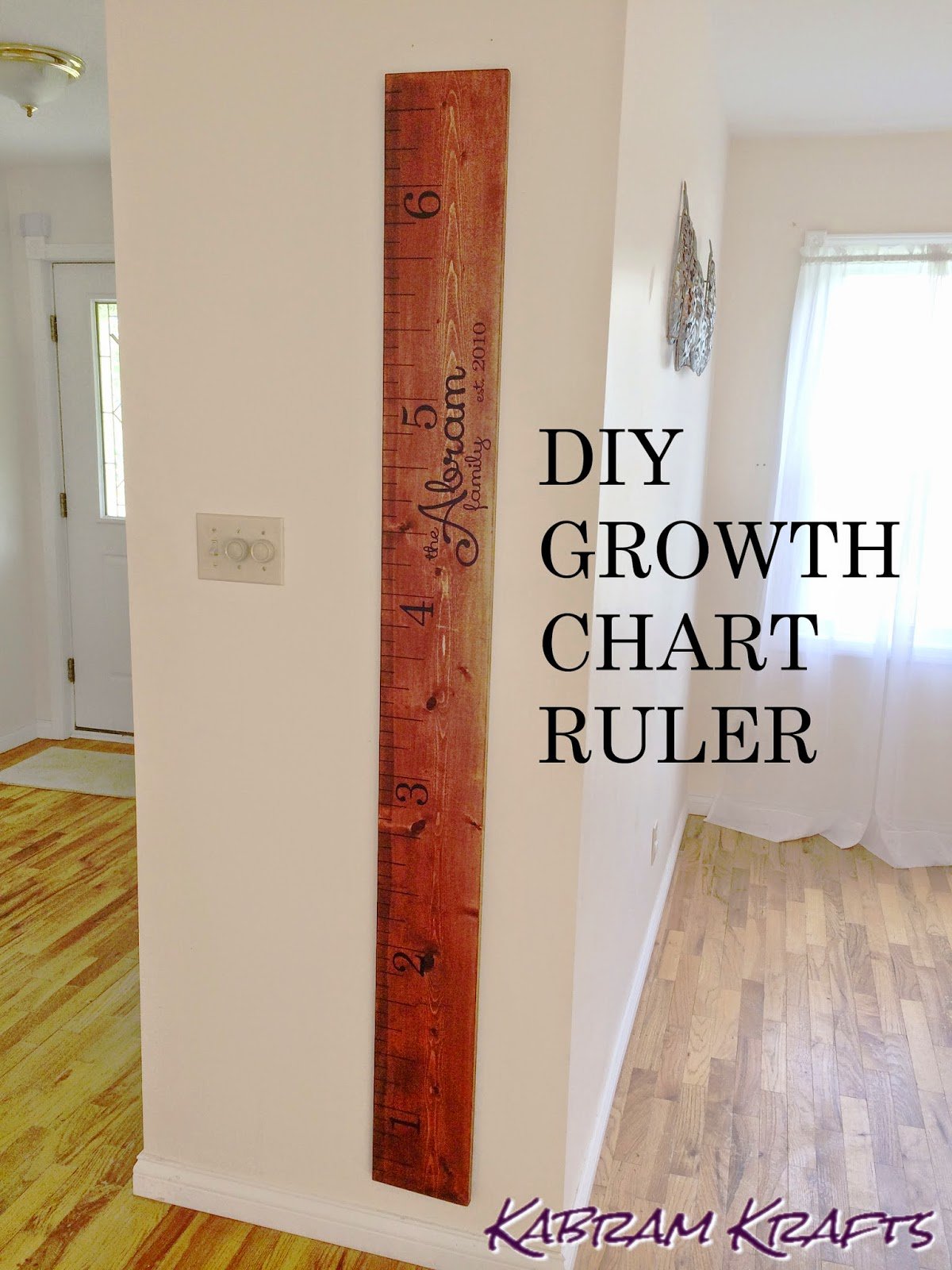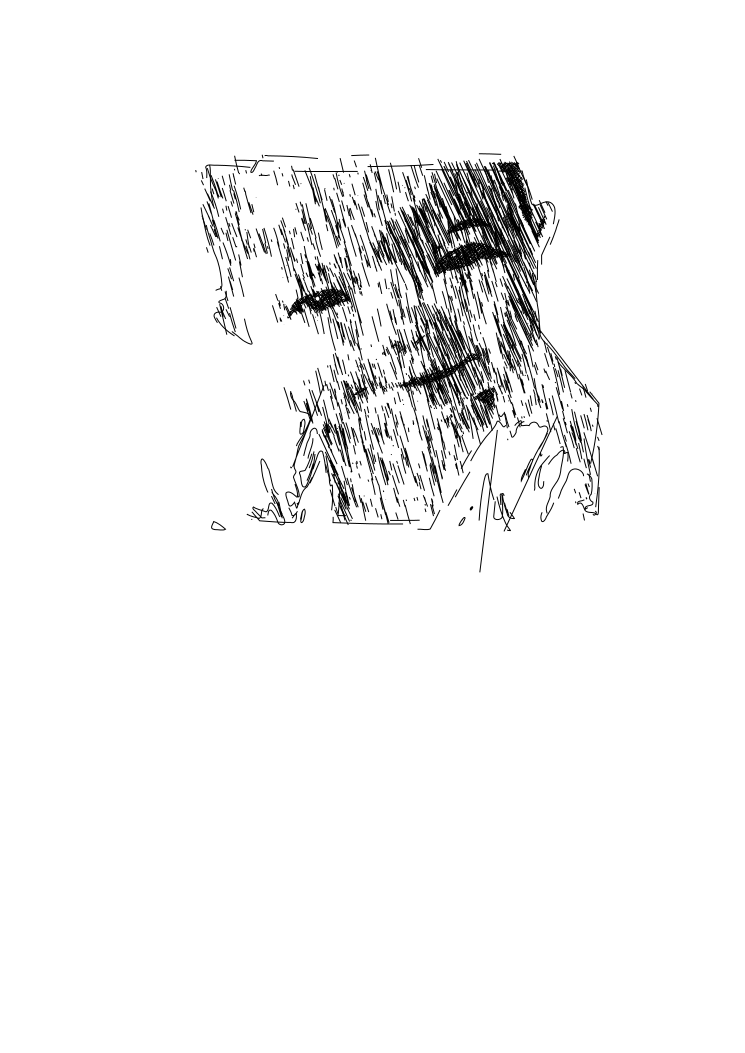
How To Make Custom Monogrammed Travertine Coasters with your Silhouette Cameo



Can you believe it is almost fall already? We saw some very warm temperatures this past week and it sure didn’t feel like September at all. The cooler temperatures will be nice, and it will be fun to rake up piles of leaves for my daughter to play in.
I have been thinking about pumpkins and had fun make this simple little pumpkin file. It is two pieces and would look very nice cut out in brown for the overlay and a nice fall orange for the pumpkin. I have visions of making more and maybe even some jack-o-lanterns, but we’ll see what happens.
 |
[{"id":3005,"link":"https:\/\/kabramkrafts.com\/2025\/11\/%f0%9f%a6%83-mix-it-up-combining-svgs-with-traditional-crafting-for-beautiful-mixed-media-projects\/","name":"%f0%9f%a6%83-mix-it-up-combining-svgs-with-traditional-crafting-for-beautiful-mixed-media-projects","thumbnail":{"url":"https:\/\/kabramkrafts.com\/wp-content\/uploads\/2025\/11\/Whisk_e761f4504f42791a8cf498d91e798e30dr.jpeg","alt":""},"title":"\ud83e\udd83 Mix It Up! Combining SVGs with Traditional Crafting for Beautiful Mixed Media Projects","postMeta":[],"author":{"name":"kabram","link":"https:\/\/kabramkrafts.com\/author\/kabram\/"},"date":"Nov 7, 2025","dateGMT":"2025-11-07 02:34:58","modifiedDate":"2025-11-07 02:35:00","modifiedDateGMT":"2025-11-07 02:35:00","commentCount":"0","commentStatus":"open","categories":{"coma":"<a href=\"https:\/\/kabramkrafts.com\/category\/craft-room\/\" rel=\"category tag\">Craft Room<\/a>, <a href=\"https:\/\/kabramkrafts.com\/category\/decor\/\" rel=\"category tag\">Decor<\/a>, <a href=\"https:\/\/kabramkrafts.com\/category\/diy\/\" rel=\"category tag\">DIY<\/a>, <a href=\"https:\/\/kabramkrafts.com\/category\/fall\/\" rel=\"category tag\">Fall<\/a>, <a href=\"https:\/\/kabramkrafts.com\/category\/silhouette-cameo\/\" rel=\"category tag\">Silhouette Cameo<\/a>, <a href=\"https:\/\/kabramkrafts.com\/category\/svg\/\" rel=\"category tag\">SVG<\/a>, <a href=\"https:\/\/kabramkrafts.com\/category\/uncategorized\/\" rel=\"category tag\">Uncategorized<\/a>","space":"<a href=\"https:\/\/kabramkrafts.com\/category\/craft-room\/\" rel=\"category tag\">Craft Room<\/a> <a href=\"https:\/\/kabramkrafts.com\/category\/decor\/\" rel=\"category tag\">Decor<\/a> <a href=\"https:\/\/kabramkrafts.com\/category\/diy\/\" rel=\"category tag\">DIY<\/a> <a href=\"https:\/\/kabramkrafts.com\/category\/fall\/\" rel=\"category tag\">Fall<\/a> <a href=\"https:\/\/kabramkrafts.com\/category\/silhouette-cameo\/\" rel=\"category tag\">Silhouette Cameo<\/a> <a href=\"https:\/\/kabramkrafts.com\/category\/svg\/\" rel=\"category tag\">SVG<\/a> <a href=\"https:\/\/kabramkrafts.com\/category\/uncategorized\/\" rel=\"category tag\">Uncategorized<\/a>"},"taxonomies":{"post_tag":"<a href='https:\/\/kabramkrafts.com\/tag\/diy\/' rel='post_tag'>DIY<\/a><a href='https:\/\/kabramkrafts.com\/tag\/household\/' rel='post_tag'>Household<\/a><a href='https:\/\/kabramkrafts.com\/tag\/silhouette-cameo\/' rel='post_tag'>Silhouette Cameo<\/a><a href='https:\/\/kabramkrafts.com\/tag\/svg\/' rel='post_tag'>SVG<\/a>"},"readTime":{"min":2,"sec":58},"status":"publish","excerpt":""},{"id":2985,"link":"https:\/\/kabramkrafts.com\/2025\/10\/%f0%9f%8e%83-free-halloween-svg-bundle-witch-ghosts-tree-more\/","name":"%f0%9f%8e%83-free-halloween-svg-bundle-witch-ghosts-tree-more","thumbnail":{"url":"https:\/\/kabramkrafts.com\/wp-content\/uploads\/2025\/10\/Spooky-Kabram-Krafts-scaled.jpg","alt":""},"title":"\ud83c\udf83 Free Halloween SVG Bundle \u2014 Witch, Ghosts, Tree & More!","postMeta":[],"author":{"name":"kabram","link":"https:\/\/kabramkrafts.com\/author\/kabram\/"},"date":"Oct 14, 2025","dateGMT":"2025-10-14 02:48:06","modifiedDate":"2025-10-14 02:48:08","modifiedDateGMT":"2025-10-14 02:48:08","commentCount":"0","commentStatus":"open","categories":{"coma":"<a href=\"https:\/\/kabramkrafts.com\/category\/cards\/\" rel=\"category tag\">Cards<\/a>, <a href=\"https:\/\/kabramkrafts.com\/category\/cutting-file\/\" rel=\"category tag\">Cutting File<\/a>, <a href=\"https:\/\/kabramkrafts.com\/category\/decor\/\" rel=\"category tag\">Decor<\/a>, <a href=\"https:\/\/kabramkrafts.com\/category\/fall\/\" rel=\"category tag\">Fall<\/a>, <a href=\"https:\/\/kabramkrafts.com\/category\/featured\/\" rel=\"category tag\">featured<\/a>, <a href=\"https:\/\/kabramkrafts.com\/category\/halloween\/\" rel=\"category tag\">Halloween<\/a>, <a href=\"https:\/\/kabramkrafts.com\/category\/svg\/\" rel=\"category tag\">SVG<\/a>","space":"<a href=\"https:\/\/kabramkrafts.com\/category\/cards\/\" rel=\"category tag\">Cards<\/a> <a href=\"https:\/\/kabramkrafts.com\/category\/cutting-file\/\" rel=\"category tag\">Cutting File<\/a> <a href=\"https:\/\/kabramkrafts.com\/category\/decor\/\" rel=\"category tag\">Decor<\/a> <a href=\"https:\/\/kabramkrafts.com\/category\/fall\/\" rel=\"category tag\">Fall<\/a> <a href=\"https:\/\/kabramkrafts.com\/category\/featured\/\" rel=\"category tag\">featured<\/a> <a href=\"https:\/\/kabramkrafts.com\/category\/halloween\/\" rel=\"category tag\">Halloween<\/a> <a href=\"https:\/\/kabramkrafts.com\/category\/svg\/\" rel=\"category tag\">SVG<\/a>"},"taxonomies":{"post_tag":"<a href='https:\/\/kabramkrafts.com\/tag\/boo\/' rel='post_tag'>boo<\/a><a href='https:\/\/kabramkrafts.com\/tag\/cards\/' rel='post_tag'>Cards<\/a><a href='https:\/\/kabramkrafts.com\/tag\/craft\/' rel='post_tag'>Craft<\/a><a href='https:\/\/kabramkrafts.com\/tag\/cutting-file\/' rel='post_tag'>Cutting File<\/a><a href='https:\/\/kabramkrafts.com\/tag\/diy\/' rel='post_tag'>DIY<\/a><a href='https:\/\/kabramkrafts.com\/tag\/ghosts\/' rel='post_tag'>ghosts<\/a><a href='https:\/\/kabramkrafts.com\/tag\/halloween\/' rel='post_tag'>halloween<\/a><a href='https:\/\/kabramkrafts.com\/tag\/silhouette\/' rel='post_tag'>Silhouette<\/a><a href='https:\/\/kabramkrafts.com\/tag\/silhouette-cameo\/' rel='post_tag'>Silhouette Cameo<\/a><a href='https:\/\/kabramkrafts.com\/tag\/spider\/' rel='post_tag'>spider<\/a><a href='https:\/\/kabramkrafts.com\/tag\/svg\/' rel='post_tag'>SVG<\/a>"},"readTime":{"min":1,"sec":17},"status":"publish","excerpt":""},{"id":1647,"link":"https:\/\/kabramkrafts.com\/2018\/10\/pumpkin-stack-svg-fall-freebie\/","name":"pumpkin-stack-svg-fall-freebie","thumbnail":{"url":"https:\/\/kabramkrafts.com\/wp-content\/uploads\/2018\/10\/pumpkin-stack.png","alt":""},"title":"Pumpkin Stack SVG - Fall Freebie!","postMeta":[],"author":{"name":"kabram","link":"https:\/\/kabramkrafts.com\/author\/kabram\/"},"date":"Oct 19, 2018","dateGMT":"2018-10-19 22:52:41","modifiedDate":"2022-09-13 18:52:48","modifiedDateGMT":"2022-09-13 18:52:48","commentCount":"4","commentStatus":"open","categories":{"coma":"<a href=\"https:\/\/kabramkrafts.com\/category\/cards\/\" rel=\"category tag\">Cards<\/a>, <a href=\"https:\/\/kabramkrafts.com\/category\/cutting-file\/\" rel=\"category tag\">Cutting File<\/a>, <a href=\"https:\/\/kabramkrafts.com\/category\/diy\/\" rel=\"category tag\">DIY<\/a>, <a href=\"https:\/\/kabramkrafts.com\/category\/fall\/\" rel=\"category tag\">Fall<\/a>, <a href=\"https:\/\/kabramkrafts.com\/category\/featured\/\" rel=\"category tag\">featured<\/a>, <a href=\"https:\/\/kabramkrafts.com\/category\/silhouette-cameo\/\" rel=\"category tag\">Silhouette Cameo<\/a>, <a href=\"https:\/\/kabramkrafts.com\/category\/svg\/\" rel=\"category tag\">SVG<\/a>","space":"<a href=\"https:\/\/kabramkrafts.com\/category\/cards\/\" rel=\"category tag\">Cards<\/a> <a href=\"https:\/\/kabramkrafts.com\/category\/cutting-file\/\" rel=\"category tag\">Cutting File<\/a> <a href=\"https:\/\/kabramkrafts.com\/category\/diy\/\" rel=\"category tag\">DIY<\/a> <a href=\"https:\/\/kabramkrafts.com\/category\/fall\/\" rel=\"category tag\">Fall<\/a> <a href=\"https:\/\/kabramkrafts.com\/category\/featured\/\" rel=\"category tag\">featured<\/a> <a href=\"https:\/\/kabramkrafts.com\/category\/silhouette-cameo\/\" rel=\"category tag\">Silhouette Cameo<\/a> <a href=\"https:\/\/kabramkrafts.com\/category\/svg\/\" rel=\"category tag\">SVG<\/a>"},"taxonomies":{"post_tag":"<a href='https:\/\/kabramkrafts.com\/tag\/artwork\/' rel='post_tag'>Artwork<\/a><a href='https:\/\/kabramkrafts.com\/tag\/autumn\/' rel='post_tag'>autumn<\/a><a href='https:\/\/kabramkrafts.com\/tag\/cards\/' rel='post_tag'>Cards<\/a><a href='https:\/\/kabramkrafts.com\/tag\/cutting-file\/' rel='post_tag'>Cutting File<\/a><a href='https:\/\/kabramkrafts.com\/tag\/diy\/' rel='post_tag'>DIY<\/a><a href='https:\/\/kabramkrafts.com\/tag\/fall\/' rel='post_tag'>Fall<\/a><a href='https:\/\/kabramkrafts.com\/tag\/featured\/' rel='post_tag'>featured<\/a><a href='https:\/\/kabramkrafts.com\/tag\/freebie\/' rel='post_tag'>freebie<\/a><a href='https:\/\/kabramkrafts.com\/tag\/pumpkins\/' rel='post_tag'>pumpkins<\/a><a href='https:\/\/kabramkrafts.com\/tag\/silhouette\/' rel='post_tag'>Silhouette<\/a><a href='https:\/\/kabramkrafts.com\/tag\/silhouette-cameo\/' rel='post_tag'>Silhouette Cameo<\/a><a href='https:\/\/kabramkrafts.com\/tag\/svg\/' rel='post_tag'>SVG<\/a><a href='https:\/\/kabramkrafts.com\/tag\/vinyl\/' rel='post_tag'>vinyl<\/a>"},"readTime":{"min":2,"sec":12},"status":"publish","excerpt":""},{"id":1450,"link":"https:\/\/kabramkrafts.com\/2018\/01\/free-svg-hearts-download-valentine\/","name":"free-svg-hearts-download-valentine","thumbnail":{"url":"https:\/\/kabramkrafts.com\/wp-content\/uploads\/2018\/01\/1Hearts-For-Valentines-Day@0.5x-e1516137049356.png","alt":""},"title":"Hearts for your Valentine! Free SVG download for your card making and crafting.","postMeta":[],"author":{"name":"kabram","link":"https:\/\/kabramkrafts.com\/author\/kabram\/"},"date":"Jan 16, 2018","dateGMT":"2018-01-16 21:03:19","modifiedDate":"2018-01-16 21:21:54","modifiedDateGMT":"2018-01-16 21:21:54","commentCount":"0","commentStatus":"open","categories":{"coma":"<a href=\"https:\/\/kabramkrafts.com\/category\/cards\/\" rel=\"category tag\">Cards<\/a>, <a href=\"https:\/\/kabramkrafts.com\/category\/craft-room\/\" rel=\"category tag\">Craft Room<\/a>, <a href=\"https:\/\/kabramkrafts.com\/category\/cutting-file\/\" rel=\"category tag\">Cutting File<\/a>, <a href=\"https:\/\/kabramkrafts.com\/category\/diy\/\" rel=\"category tag\">DIY<\/a>, <a href=\"https:\/\/kabramkrafts.com\/category\/featured\/\" rel=\"category tag\">featured<\/a>, <a href=\"https:\/\/kabramkrafts.com\/category\/household\/\" rel=\"category tag\">Household<\/a>, <a href=\"https:\/\/kabramkrafts.com\/category\/silhouette-cameo\/\" rel=\"category tag\">Silhouette Cameo<\/a>, <a href=\"https:\/\/kabramkrafts.com\/category\/svg\/\" rel=\"category tag\">SVG<\/a>, <a href=\"https:\/\/kabramkrafts.com\/category\/thanksgiving\/\" rel=\"category tag\">Thanksgiving<\/a>","space":"<a href=\"https:\/\/kabramkrafts.com\/category\/cards\/\" rel=\"category tag\">Cards<\/a> <a href=\"https:\/\/kabramkrafts.com\/category\/craft-room\/\" rel=\"category tag\">Craft Room<\/a> <a href=\"https:\/\/kabramkrafts.com\/category\/cutting-file\/\" rel=\"category tag\">Cutting File<\/a> <a href=\"https:\/\/kabramkrafts.com\/category\/diy\/\" rel=\"category tag\">DIY<\/a> <a href=\"https:\/\/kabramkrafts.com\/category\/featured\/\" rel=\"category tag\">featured<\/a> <a href=\"https:\/\/kabramkrafts.com\/category\/household\/\" rel=\"category tag\">Household<\/a> <a href=\"https:\/\/kabramkrafts.com\/category\/silhouette-cameo\/\" rel=\"category tag\">Silhouette Cameo<\/a> <a href=\"https:\/\/kabramkrafts.com\/category\/svg\/\" rel=\"category tag\">SVG<\/a> <a href=\"https:\/\/kabramkrafts.com\/category\/thanksgiving\/\" rel=\"category tag\">Thanksgiving<\/a>"},"taxonomies":{"post_tag":"<a href='https:\/\/kabramkrafts.com\/tag\/cards\/' rel='post_tag'>Cards<\/a><a href='https:\/\/kabramkrafts.com\/tag\/craft-room\/' rel='post_tag'>craft room<\/a><a href='https:\/\/kabramkrafts.com\/tag\/cutting-file\/' rel='post_tag'>Cutting File<\/a><a href='https:\/\/kabramkrafts.com\/tag\/diy\/' rel='post_tag'>DIY<\/a><a href='https:\/\/kabramkrafts.com\/tag\/fall\/' rel='post_tag'>Fall<\/a><a href='https:\/\/kabramkrafts.com\/tag\/featured\/' rel='post_tag'>featured<\/a><a href='https:\/\/kabramkrafts.com\/tag\/hand-lettered\/' rel='post_tag'>hand lettered<\/a><a href='https:\/\/kabramkrafts.com\/tag\/silhouette\/' rel='post_tag'>Silhouette<\/a><a href='https:\/\/kabramkrafts.com\/tag\/silhouette-cameo\/' rel='post_tag'>Silhouette Cameo<\/a><a href='https:\/\/kabramkrafts.com\/tag\/special-occasion\/' rel='post_tag'>special occasion<\/a><a href='https:\/\/kabramkrafts.com\/tag\/svg\/' rel='post_tag'>SVG<\/a>"},"readTime":{"min":0,"sec":47},"status":"publish","excerpt":""},{"id":1344,"link":"https:\/\/kabramkrafts.com\/2017\/11\/give-thanks-svg-hand-lettered-freebie\/","name":"give-thanks-svg-hand-lettered-freebie","thumbnail":{"url":"https:\/\/kabramkrafts.com\/wp-content\/uploads\/2017\/11\/towel-example.png","alt":""},"title":"Give Thanks SVG Hand Lettered Freebie!","postMeta":[],"author":{"name":"kabram","link":"https:\/\/kabramkrafts.com\/author\/kabram\/"},"date":"Nov 6, 2017","dateGMT":"2017-11-06 08:30:58","modifiedDate":"2017-11-08 17:15:21","modifiedDateGMT":"2017-11-08 17:15:21","commentCount":"0","commentStatus":"open","categories":{"coma":"<a href=\"https:\/\/kabramkrafts.com\/category\/cards\/\" rel=\"category tag\">Cards<\/a>, <a href=\"https:\/\/kabramkrafts.com\/category\/craft-room\/\" rel=\"category tag\">Craft Room<\/a>, <a href=\"https:\/\/kabramkrafts.com\/category\/cutting-file\/\" rel=\"category tag\">Cutting File<\/a>, <a href=\"https:\/\/kabramkrafts.com\/category\/diy\/\" rel=\"category tag\">DIY<\/a>, <a href=\"https:\/\/kabramkrafts.com\/category\/featured\/\" rel=\"category tag\">featured<\/a>, <a href=\"https:\/\/kabramkrafts.com\/category\/household\/\" rel=\"category tag\">Household<\/a>, <a href=\"https:\/\/kabramkrafts.com\/category\/silhouette-cameo\/\" rel=\"category tag\">Silhouette Cameo<\/a>, <a href=\"https:\/\/kabramkrafts.com\/category\/svg\/\" rel=\"category tag\">SVG<\/a>, <a href=\"https:\/\/kabramkrafts.com\/category\/thanksgiving\/\" rel=\"category tag\">Thanksgiving<\/a>","space":"<a href=\"https:\/\/kabramkrafts.com\/category\/cards\/\" rel=\"category tag\">Cards<\/a> <a href=\"https:\/\/kabramkrafts.com\/category\/craft-room\/\" rel=\"category tag\">Craft Room<\/a> <a href=\"https:\/\/kabramkrafts.com\/category\/cutting-file\/\" rel=\"category tag\">Cutting File<\/a> <a href=\"https:\/\/kabramkrafts.com\/category\/diy\/\" rel=\"category tag\">DIY<\/a> <a href=\"https:\/\/kabramkrafts.com\/category\/featured\/\" rel=\"category tag\">featured<\/a> <a href=\"https:\/\/kabramkrafts.com\/category\/household\/\" rel=\"category tag\">Household<\/a> <a href=\"https:\/\/kabramkrafts.com\/category\/silhouette-cameo\/\" rel=\"category tag\">Silhouette Cameo<\/a> <a href=\"https:\/\/kabramkrafts.com\/category\/svg\/\" rel=\"category tag\">SVG<\/a> <a href=\"https:\/\/kabramkrafts.com\/category\/thanksgiving\/\" rel=\"category tag\">Thanksgiving<\/a>"},"taxonomies":{"post_tag":"<a href='https:\/\/kabramkrafts.com\/tag\/cards\/' rel='post_tag'>Cards<\/a><a href='https:\/\/kabramkrafts.com\/tag\/craft-room\/' rel='post_tag'>craft room<\/a><a href='https:\/\/kabramkrafts.com\/tag\/cutting-file\/' rel='post_tag'>Cutting File<\/a><a href='https:\/\/kabramkrafts.com\/tag\/diy\/' rel='post_tag'>DIY<\/a><a href='https:\/\/kabramkrafts.com\/tag\/fall\/' rel='post_tag'>Fall<\/a><a href='https:\/\/kabramkrafts.com\/tag\/featured\/' rel='post_tag'>featured<\/a><a href='https:\/\/kabramkrafts.com\/tag\/hand-lettered\/' rel='post_tag'>hand lettered<\/a><a href='https:\/\/kabramkrafts.com\/tag\/silhouette\/' rel='post_tag'>Silhouette<\/a><a href='https:\/\/kabramkrafts.com\/tag\/silhouette-cameo\/' rel='post_tag'>Silhouette Cameo<\/a><a href='https:\/\/kabramkrafts.com\/tag\/special-occasion\/' rel='post_tag'>special occasion<\/a><a href='https:\/\/kabramkrafts.com\/tag\/svg\/' rel='post_tag'>SVG<\/a>"},"readTime":{"min":1,"sec":11},"status":"publish","excerpt":""},{"id":147,"link":"https:\/\/kabramkrafts.com\/2016\/09\/fall-leaves-free-cutting-files-svg-dxf\/","name":"fall-leaves-free-cutting-files-svg-dxf","thumbnail":{"url":"https:\/\/kabramkrafts.com\/wp-content\/uploads\/2016\/09\/Leaves-5.png","alt":""},"title":"Fall Leaves - Free Cutting Files SVG","postMeta":[],"author":{"name":"kabram","link":"https:\/\/kabramkrafts.com\/author\/kabram\/"},"date":"Sep 10, 2016","dateGMT":"2016-09-10 18:46:00","modifiedDate":"2022-08-26 17:43:31","modifiedDateGMT":"2022-08-26 17:43:31","commentCount":"0","commentStatus":"open","categories":{"coma":"<a href=\"https:\/\/kabramkrafts.com\/category\/cards\/\" rel=\"category tag\">Cards<\/a>, <a href=\"https:\/\/kabramkrafts.com\/category\/fall\/\" rel=\"category tag\">Fall<\/a>, <a href=\"https:\/\/kabramkrafts.com\/category\/svg\/\" rel=\"category tag\">SVG<\/a>","space":"<a href=\"https:\/\/kabramkrafts.com\/category\/cards\/\" rel=\"category tag\">Cards<\/a> <a href=\"https:\/\/kabramkrafts.com\/category\/fall\/\" rel=\"category tag\">Fall<\/a> <a href=\"https:\/\/kabramkrafts.com\/category\/svg\/\" rel=\"category tag\">SVG<\/a>"},"taxonomies":{"post_tag":"<a href='https:\/\/kabramkrafts.com\/tag\/cutting-file\/' rel='post_tag'>Cutting File<\/a><a href='https:\/\/kabramkrafts.com\/tag\/featured\/' rel='post_tag'>featured<\/a><a href='https:\/\/kabramkrafts.com\/tag\/silhouette-cameo\/' rel='post_tag'>Silhouette Cameo<\/a><a href='https:\/\/kabramkrafts.com\/tag\/svg\/' rel='post_tag'>SVG<\/a>"},"readTime":{"min":0,"sec":33},"status":"publish","excerpt":""},{"id":166,"link":"https:\/\/kabramkrafts.com\/2014\/09\/free-pumpkin-svg-file-fall-is-here\/","name":"free-pumpkin-svg-file-fall-is-here","thumbnail":{"url":"https:\/\/kabramkrafts.com\/wp-content\/uploads\/2014\/09\/Pumpkin-1.png","alt":"Pumpkin "},"title":"Free Pumpkin SVG File - Fall is Here!","postMeta":[],"author":{"name":"kabram","link":"https:\/\/kabramkrafts.com\/author\/kabram\/"},"date":"Sep 9, 2014","dateGMT":"2014-09-09 19:04:00","modifiedDate":"2022-08-26 16:35:25","modifiedDateGMT":"2022-08-26 16:35:25","commentCount":"8","commentStatus":"open","categories":{"coma":"<a href=\"https:\/\/kabramkrafts.com\/category\/cutting-file\/\" rel=\"category tag\">Cutting File<\/a>, <a href=\"https:\/\/kabramkrafts.com\/category\/fall\/\" rel=\"category tag\">Fall<\/a>, <a href=\"https:\/\/kabramkrafts.com\/category\/silhouette-cameo\/\" rel=\"category tag\">Silhouette Cameo<\/a>, <a href=\"https:\/\/kabramkrafts.com\/category\/svg\/\" rel=\"category tag\">SVG<\/a>, <a href=\"https:\/\/kabramkrafts.com\/category\/thanksgiving\/\" rel=\"category tag\">Thanksgiving<\/a>","space":"<a href=\"https:\/\/kabramkrafts.com\/category\/cutting-file\/\" rel=\"category tag\">Cutting File<\/a> <a href=\"https:\/\/kabramkrafts.com\/category\/fall\/\" rel=\"category tag\">Fall<\/a> <a href=\"https:\/\/kabramkrafts.com\/category\/silhouette-cameo\/\" rel=\"category tag\">Silhouette Cameo<\/a> <a href=\"https:\/\/kabramkrafts.com\/category\/svg\/\" rel=\"category tag\">SVG<\/a> <a href=\"https:\/\/kabramkrafts.com\/category\/thanksgiving\/\" rel=\"category tag\">Thanksgiving<\/a>"},"taxonomies":{"post_tag":"<a href='https:\/\/kabramkrafts.com\/tag\/cutting-file\/' rel='post_tag'>Cutting File<\/a><a href='https:\/\/kabramkrafts.com\/tag\/diy\/' rel='post_tag'>DIY<\/a><a href='https:\/\/kabramkrafts.com\/tag\/fall\/' rel='post_tag'>Fall<\/a><a href='https:\/\/kabramkrafts.com\/tag\/silhouette-cameo\/' rel='post_tag'>Silhouette Cameo<\/a><a href='https:\/\/kabramkrafts.com\/tag\/svg\/' rel='post_tag'>SVG<\/a>"},"readTime":{"min":0,"sec":33},"status":"publish","excerpt":""}]

Aren’t Elephants awesome? They are such elegant creatures, but yet so strong and mighty too. I rounded up some free images I found on the web and created some awesome cutting files!
I am envisioning the elephants with the heart as an awesome note card or love note design – stuck in a frame, it could be a very simple cut and go card. I’m not sure what I will use the African Elephant design for, but perhaps it would make a good vinyl application to my daughter’s nursery. Lately I have been envisioning her walls bedecked with multitudes of vinyl animals.
There is also an elephant sketch file that would work well on the front of a baby shower card or perhaps a baby announcement.
Finally, I found the last elephant as a free tattoo design that would look awesome in vinyl, or perhaps cut as a stencil.
If you use these in any of your project, definitely show me! I would love to see how your crafty brains put these to use.
Aren’t Elephants awesome? They are such elegant creatures, but yet so strong and mighty too. I rounded up some free images I found on the web and created some awesome cutting files!
I am envisioning the elephants with the heart as an awesome note card or love note design – stuck in a frame, it could be a very simple cut and go card. I’m not sure what I will use the African Elephant design for, but perhaps it would make a good vinyl application to my daughter’s nursery. Lately I have been envisioning her walls bedecked with multitudes of vinyl animals.
There is also an elephant sketch file that would work well on the front of a baby shower card or perhaps a baby announcement.
Finally, I found the last elephant as a free tattoo design that would look awesome in vinyl, or perhaps cut as a stencil.
If you use these in any of your project, definitely show me! I would love to see how your crafty brains put these to use.
 |
| Download the Zip file with the free SVG and DFX files HERE |

Well, this is one of those projects that I’m sure you have seen if you have spent any time on Pinterest. Despite its ubiquity, I wanted to give it a try since it has a wonderful appeal both in its practicality and in its decorative nature.
Once completed, you can chart your children’s growth without the worry of having to leave behind a chart on the wall. The ruler is also a beautiful keepsake for years to come!
I wanted to keep the cost of this project down, so I rummaged around the stash of paints and such that was left in our home by the previous owner. I found a can of stain – just what I was after. Now, this meant that I had to be content with the stain color I had (red oak), but it definitely kept the costs down.
Materials
Tips: I used Century font and put a little bracket around each number to help me line it up. If you use my cut file, leave the bracket on while applying to get it straight, then pull it off your project. Play around with your name if you want it, I used Xiomara font with Century for the numbers.

Fireworks are just around the corner, so I thought I would turn my Inkscape experiments to something celebratory. Turns out that the clone tool is awesome! If I get a chance I may just write up a bit on how to clone and rotate shapes around a center.
 |
| Free SVG File |

Well, I know that these occasions have now passed for most of us, but I thought I would share what I came up with anyhow.
I made a couple different Mother’s Day cards, and a graduation card for my little sister.
I was very happy with how the designs came out, though my color choices for the graduation card could have been improved. Oh well, I keep learning!
First, here is the graduation card and a free download of the svg and studio files:
 |
| 2014 Graduation Card – Black Rose Font for the Year |
 |
| Free SVG File Download |
Below are the Mother’s Day cards I made. For the first one (purple), I used a floral card from the Silhouette Store and added a simple butterfly to it. The second one I used a frame I found on www.birdscards.com and added the sentiment in Blessed Day font. Here is the Mother’s Day card I made last year on my ecraft.

UPDATE: I modified my chart slightly and changed the border to match my bulletin board makeover project. I think the end result turned out very nicely – check it out here!
Having seen a number of chore charts and schedules on Pinterest, I decided that I could probably benefit from one myself. It is so hard for me to motivate myself to do the chores around the house, but I LOVE checking off my accomplishments. Enter the Chore Chart:

I can’t stop feeling thrilled about my new silhouette cameo, which I was really blessed to receive as a Christmas bonus from my work – LTIIT. And… working on my new craft table was awesome!
After opening up and marveling at how light it was compared to my ecraft, I knew exactly what I wanted to try cutting out first. Awhile ago, I had made a file from one of our engagement photos that I was really excited about. It is an image of us standing together and it made a great silhouette.
Unfortunately, the ecraft could not cut this image out no matter what I tried. It would always mess up either my husband’s pants, or my nose and face. I think that due to the no mat cutting approach of the ecraft, it would always slip a little. Or, maybe my machine is just out of alignment. At any rate – the cameo got it on the first pass! Here is a picture of the finished cut:
 So, how did I do it?
So, how did I do it?
My mother recently got excited about my electric cutting machine and the vinyl wall decals I have been making. Amazingly, it was just what her church had been looking for. She enlisted my help and we designed and cut out a message that my parents helped them install in their sanctuary.
The saying says “To know Jesus ….. and make Him known.” It wasn’t very hard to make. I use the free program Inkscape to make my svg files, and then simply import them into eCraftShop Pro for cutting out on my ecraft. The only trouble I had was that to make it large enough (we are talking a foot high, by many many feet long), we had to turn it vertically and made sure to put masking tape on the back (for the dual purpose of providing better traction for the rollers, and making sure the blade didn’t cut all the way through – for some reason it kept trying to, despite being on the lowest pressure setting). Anyhow, once all was in place, it turned out very nicely!
Check it out: